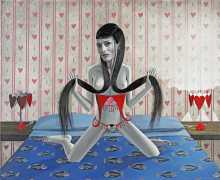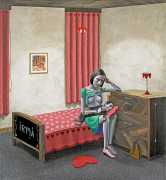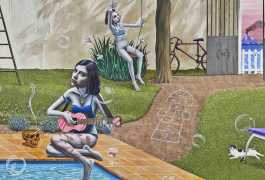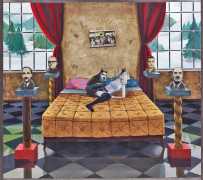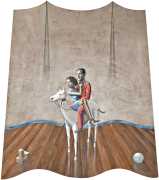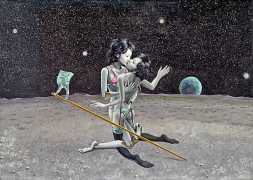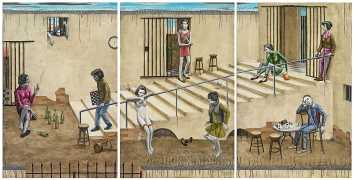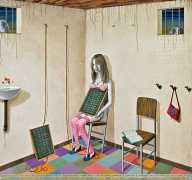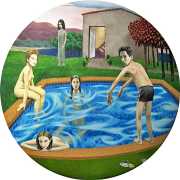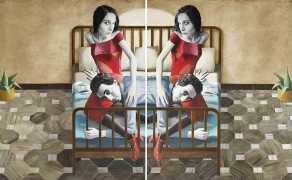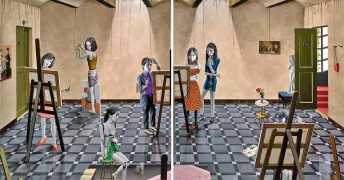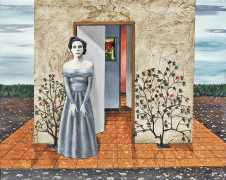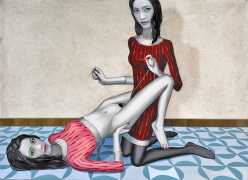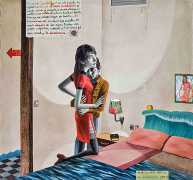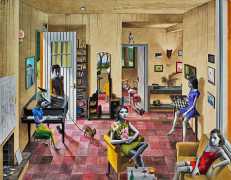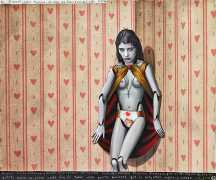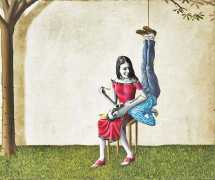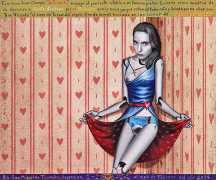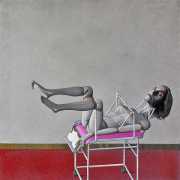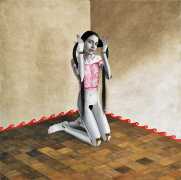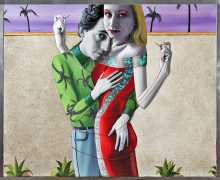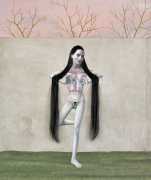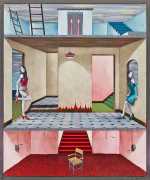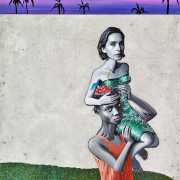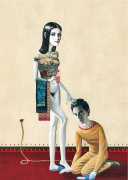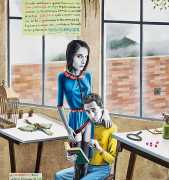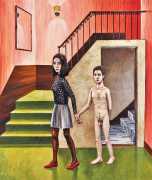With each new exhibition, and he exhibits regularly in Barcelona and in Berlin, Rubert incorporates new themes and expressive elements, such as natural hair, or threads to tie up men and women (it’s not clear who is being tied up by whom: these things are always messy) or sew up sexual organs or eyelids. Sometimes he includes lighting behind the canvas, the background lights going on and off slowly, revealing and hiding the erotic encounters behind the curtains.
His large-format pieces evoke all kinds of other works, both ancient and modern. We see echoes of Bosch’s Garden of Earthly Delights and A Midsummer Night’s Dream, but also Beyond the Pleasure Principle and other essays by Freud, acknowledging a determination to face our sinister side, and many of Nietzsche’s essays, honouring the writer’s defence of freedom, vitality and redemptive laughter.
In 2019 the Barcelona gallery Senda mounted a Rubert exhibition titled ‘The Place to Be’, and interviewed the artist. Here are some of Rubert’s responses:
For those who are not very familiar with your work, could you share with us what keeps you grounded in your making process?
How I start a painting has very much to do with forms, shapes, geometry, proportion, composition. So, that would be like the first thing I get into and from there I am also very much into photography. There is something very magical about photography and the portrait. This is something I have been very fascinated with for years. In most of my paintings I reference portrait photography that looks at you without expression. I see this stage as the expression you have to invent for yourself. For example, when you look at a baby, you always have to show expression. Because, a straight look into the eyes with no expression has something of a tunnel to death. It is like any answer can come through that. That is an element I very often use in my works. I really enjoy creating images that you will not very easily understand, from first glance, what you are seeing.
If we bring up the question about the subject matter in your work, you tend to reference people a lot of the time and their personal experiences. Take us into the mind of Gino Rubert: do you have any strong opinions about modern love and dating?
I do not have strong opinions about modern dating or modern love. I have no prejudices against any form of dating or new love. I do feel that love and maybe particularly desire has, in a way, been very important in my life. I think in most lives it is. But, I also realise, in some lives more, in some lives less. There are certain people for whom love, affection and desire are more important than for others. For me it has been. And I definitely believe it is a theme that is always at a certain level present in my work.
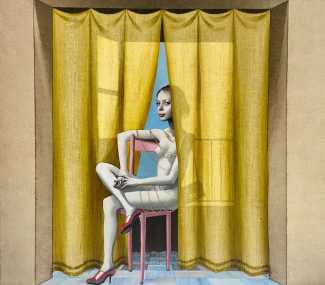 On your Instagram recently you showed a painting titled ‘The Empress’s New Clothes’. Can you tell us more about this work?
On your Instagram recently you showed a painting titled ‘The Empress’s New Clothes’. Can you tell us more about this work?
The work references a beautiful little tale by Hans Christian Andersen. The story goes like this – a king hires a fashion designer to create a beautiful outfit for him which will be the best outfit worn in the history of royalty. He ends up hiring a designer who is not so trustworthy. The day comes to show off the outfit, and the king sallies forth in it. He struts around, and the citizens of the town all admire his new clothes – except for a little kid, who says, ‘But the king is naked’. And his is indeed. To me this is a metaphor about the art world, where everybody says ‘Oh this is this, and that is that’, and sometimes it takes a kid to say that this it’s actually stupid. This story inspired ‘The Empress’s New Clothes’, because she is pretty much naked, but much sexier. She’s beautiful, and as she looks at us she’s asking ‘What do you really see?’. This is what I am constantly asking myself and my viewers.


